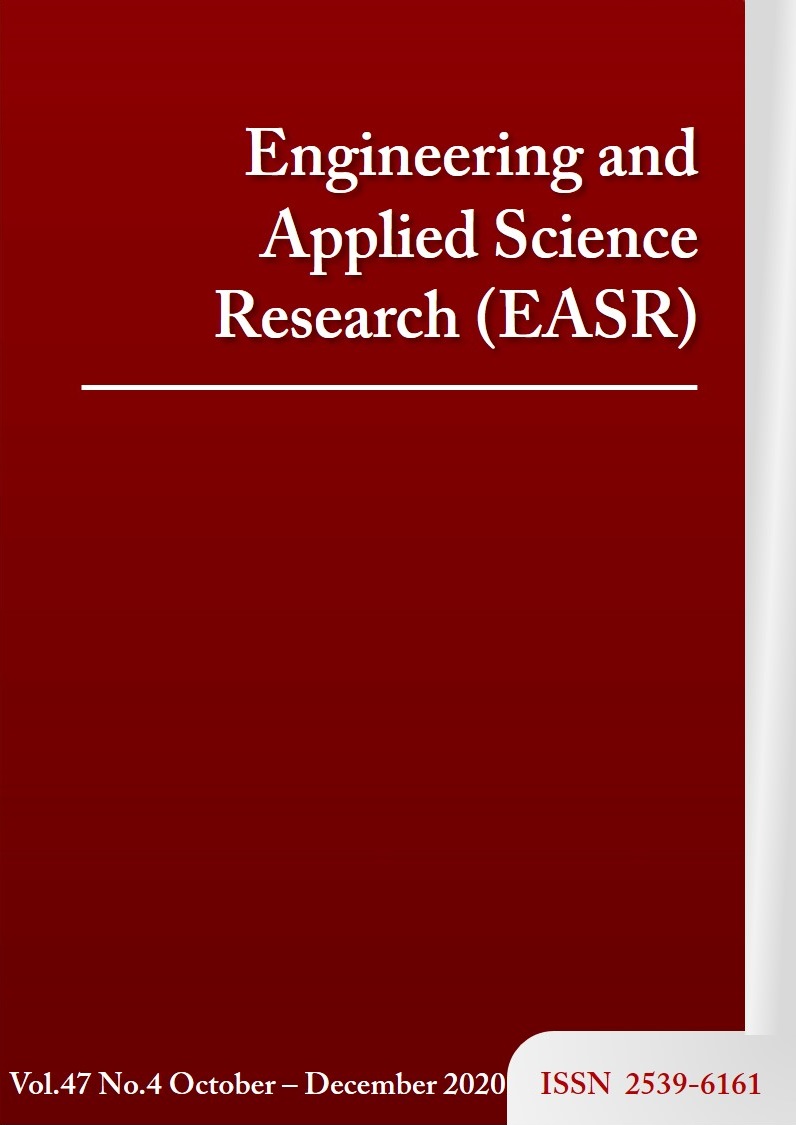3DText: Perceiving sentence-level text on 3-D model of emotions
Main Article Content
Abstract
Emotion is a psychological process which reveals the sentiments and feelings of a human being. Relating emotions detection process with psychological theory of emotions serves as the strong foundation for the system. In this paper, a model, 3DText, is proposed foe textual emotion detection. VAD (Pleasure, Arousal, and Dominance), a 3-D theory of emotion is used to extract features (P-A-D) from text. For this purpose, the dataset ANEW and WordNet are used. The objective of this paper is to determine VAD values at the sentence level of any size using word level VAD values for domain independent text. The proposed approach is evaluated on ISEAR and EMOBANK datasets. To the best of authors’ knowledge, no such model exists till date.
Article Details
This work is licensed under a Creative Commons Attribution-NonCommercial-NoDerivatives 4.0 International License.
References
Lazemi S, Ebrahimpour-Komleh H. Multi-emotion extraction from text based on linguistic analysis. Proceedings of the 4th International Conference on Web Research (ICWR); 2018 Apr 25-26; Tehran, Iran. USA: IEEE; 2018. p. 28-33.
Pambudi P, Sarno R, Faisal E. Searching word definitions in WordNet based on ANEW emotion labels. Proceedings of the International Seminar on Application for Technology of Information and Communication; 2018 Sep 21-22; Semarang, Indonesia. USA: IEEE; 2018. p. 253-6.
Rachman FH, Sarno R, Fatichah C. CBE: Corpus-based of emotion for emotion detection in text document. Proceedings of the 3rd International Conference on Information Technology, Computer, and Electrical Engineering (ICITACEE); 2016 Oct 19-20; Semarang, Indonesia. USA: IEEE; 2016. p. 331-5.
Dodds PS, Danforth CM. Measuring the happiness of large-scale written expression: Songs, blogs, and presidents. J Happiness Stud. 2010;11(4):441-56.
Islam MR, Zibran MF. DEVA: sensing emotions in the valence arousal space in software engineering text. Proceedings of the 33rd Annual ACM Symposium on Applied Computing; 2018 Apr 9-13; Pau, France. New York: ACM; 2018. p. 1536-43.
Islam MR, Ahmmed MK, Zibran MF. MarValous: machine learning based detection of emotions in the valence-arousal space in software engineering text. Proceedings of the 34th ACM/SIGAPP Symposium on Applied Computing; 2019 Apr 8-12; Limassol, Cyprus. New York: ACM; 2019. p. 1786-93.
Girardi D, Lanubile F, Novielli N, Quaranta L, Serebrenik A. Towards recognizing the emotions of developers using biometrics: the design of a field study. Proceedings of the IEEE/ACM 4th International Workshop on Emotion Awareness in Software Engineering (SEmotion); 2019 May 28; Montreal, Canada. USA: IEEE; 2019. p. 13-6.
Biswas E, Vijay-Shanker K, Pollock L. Exploring word embedding techniques to improve sentiment analysis of software engineering texts. Proceedings of the IEEE/ACM 16th International Conference on Mining Software Repositories (MSR); 2019 May 25-31; Montreal, Canada. USA: IEEE; 2019. p. 68-78.
Wijayanto UW, Sarno R. An experimental study of supervised sentiment analysis using gaussian naive bayes. Proceedings of the International Seminar on Application for Technology of Information and Communication; 2018 Sep 21-22; Semarang, Indonesia. USA: IEEE; 2018. p. 476-81.
Deshpande M, Rao V. Depression detection using emotion artificial intelligence. Proceedings of the International Conference on Intelligent Sustainable Systems (ICISS); 2017 Dec 7-8; Palladam, India. USA: IEEE; 2017. p. 858-62.
Ekman P. An argument for basic emotions. Cognit Emot. 1992;6(3-4):169-200.
Mehrabian A. Basic dimensions for a general psychological theory: implications for personality, social, environmental, and developmental studies. Cambridge: Oelgeschlager, Gunn & Hain; 1980.
Scherer KR, Wallbott HG. Evidence for universality and cultural variation of differential emotion response patterning. J Pers Soc Psychol. 1994;66(2):310-28.
Warriner AB, Kuperman V, Brysbaert M. Norms of valence, arousal, and dominance for 13,915 English lemmas. Behav Res Meth. 2013;45(4):1191-207.
Mäntylä MV, Novielli N, Lanubile F, Claes M, Kuutila M. Bootstrapping a lexicon for emotional arousal in software engineering. Proceedings of the IEEE/ACM 14th International Conference on Mining Software Repositories (MSR); 2017 May 20-21; Buenos Aires, Argentina. USA: IEEE; 2017. p. 198-202.
Miller GA. WordNet: An electronic lexical database. London: MIT press; 1998.
Buechel S, Hahn U. Emobank: Studying the impact of annotation perspective and representation format on dimensional emotion analysis. Proceedings of the 15th Conference of the European Chapter of the Association for Computational Linguistics: Volume 2, Short Papers; 2017 Apr 3-7; Valencia, Spain. USA: Association for Computational Linguistics; 2017. p. 578-85.
Munezero MD, Montero CS, Sutinen E, Pajunen J. Are they different? Affect, feeling, emotion, sentiment, and opinion detection in text. IEEE Trans Affect Comput. 2014;5(2):101-11.
Firmanto A, Sarno R. Prediction of movie sentiment based on reviews and score on rotten tomatoes using SentiWordnet. Proceedings of the International Seminar on Application for Technology of Information and Communication; 2018 Sep 21-22; Semarang, Indonesia. USA: IEEE; 2018. p. 202-6.
Elfajr NM, Sarno R. Sentiment analysis using weighted emoticons and sentiwordnet for Indonesian language. Proceedings of the International Seminar on Application for Technology of Information and Communication; 2018 Sep 21-22; Semarang, Indonesia. USA: IEEE; 2018. p. 234-8.
Hulliyah K, Bakar NS, Ismail AR. Emotion recognition and brain mapping for sentiment analysis: A review. Proceedings of the Second International Conference on Informatics and Computing (ICIC); 2017 Nov 1-3; Jayapura, Indonesia. USA: IEEE; 2017. p. 1-5.
Lazemi S, Ebrahimpour-Komleh H. Multi-emotion extraction from text using deep learning. Int J Web Res. 2018;1(1):62-7.
Rachman FH, Sarno R, Fatichah C. Music emotion classification based on lyrics-audio using corpus based emotion. Int J Electr Comput Eng. 2018;8(3):1720-30.
Poria S, Gelbukh A, Cambria E, Yang P, Hussain A, Durrani T. Merging SenticNet and WordNet-Affect emotion lists for sentiment analysis. Proceedings of the IEEE 11th International Conference on Signal Processing; 2012 Oct 21-25; Beijing, China. USA: IEEE; 2012. p. 1251-5.
Saini A, Bhatia N, Suri B, Jain S. EmoXract: Domain independent emotion mining model for unstructured data. Proceedings of the Seventh International Conference on Contemporary Computing (IC3); 2014 Aug 7-9; Noida, India. USA: IEEE; 2014. p. 94-8.
Banerjee S, Pedersen T. An adapted Lesk algorithm for word sense disambiguation using WordNet. Proceedings of the International conference on intelligent text processing and computational linguistics; 2002 Feb 17-23; Mexico City, Mexico. Berlin, Heidelberg: Springer; 2002. p. 136-45.



